
Peter Sellers was an English actor and comedian. He first came to prominence performing in the BBC Radio comedy series The Goon Show. Sellers featured on a number of hit comic songs, and became known to a worldwide audience through his many film roles, among them Chief Inspector Clouseau in The Pink Panther series.
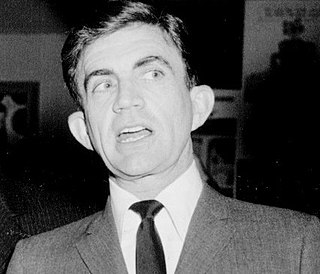
Blake Edwards was an American film director, producer, screenwriter, and actor.
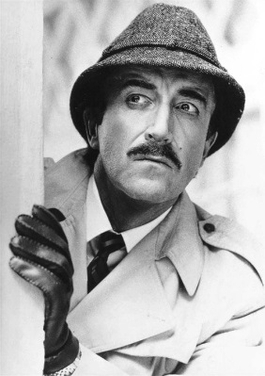
Inspector Jacques Clouseau, later granted the rank of Chief Inspector, is a fictional character in Blake Edwards' farcical The Pink Panther series. He is portrayed by Peter Sellers in the original series, and also by Alan Arkin in the 1968 film Inspector Clouseau and, in a cameo, by Roger Moore in the 1983 film Curse of the Pink Panther. In the 2006 reboot and its 2009 sequel, Clouseau is portrayed by Steve Martin. Clouseau's likeness also appears in the Pink Panther animated cartoon shorts and segments, where he is known as simply "the Inspector". More recent animated depictions from the 1970s onward were redesigned to more closely resemble Sellers, and later Martin.
The Pink Panther is an American media franchise primarily focusing on a series of comedy-mystery films featuring an inept French police detective, Inspector Jacques Clouseau. The franchise began with the release of the film The Pink Panther in 1963. The role of Clouseau was originated by and is most closely associated with Peter Sellers. Most of the films were written and directed by Blake Edwards, with theme music composed by Henry Mancini. Elements and characters inspired by the films were adapted into other media, including books, comic books, video games and animated series.

A Shot in the Dark is a 1964 comedy film directed by Blake Edwards in Panavision. Produced as a standalone sequel to The Pink Panther, it is the second installment in the eponymous film series, with Peter Sellers reprising his role as Inspector Jacques Clouseau of the French Sûreté.

Claudine Georgette Longet is a Franco-American singer, actress, dancer, and recording artist popular during the 1960s and 1970s.

Trail of the Pink Panther is a 1982 comedy film directed by Blake Edwards and starring Peter Sellers. It is the seventh film in The Pink Panther series, the first film in the series following Sellers's death and also the last in which he appeared as Inspector Clouseau. Sellers died 18 months before production began; his performance consists entirely of scenes from previous films. The newly shot material in the film stars Joanna Lumley as journalist Marie Jouvet searching for the missing Clouseau – and running afoul of the inspector's enemies who do not wish to see him return.

The Return of the Pink Panther is a 1975 comedy film and the fourth film in The Pink Panther series. The film stars Peter Sellers returning to the role of Inspector Clouseau for the first time since A Shot in the Dark (1964), after having declined to reprise the role in Inspector Clouseau (1968). The film was a commercial hit and revived the previously dormant series and with it Peter Sellers' career.

The Life and Death of Peter Sellers is a 2004 biographical film about the life of English comedian Peter Sellers, based on Roger Lewis's book of the same name. It was directed by Stephen Hopkins and stars Geoffrey Rush as Sellers, Miriam Margolyes as his mother Peg Sellers, Emily Watson as his first wife Anne Howe, Charlize Theron as his second wife Britt Ekland, John Lithgow as Blake Edwards, Stephen Fry as Maurice Woodruff and Stanley Tucci as Stanley Kubrick.
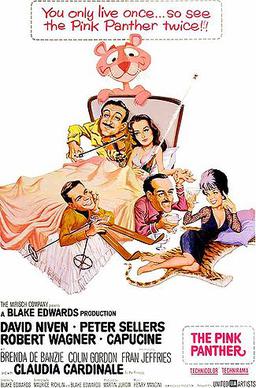
The Pink Panther is a 1963 American comedy film directed by Blake Edwards and distributed by United Artists. It was written by Maurice Richlin and Blake Edwards. It is the first installment in The Pink Panther franchise. Its story follows inspector Jacques Clouseau as he travels from Rome to Cortina d'Ampezzo to catch a notorious jewel thief known as "The Phantom" before he is able to steal a priceless diamond known as "The Pink Panther". The film stars David Niven, Peter Sellers, Robert Wagner, Capucine and Claudia Cardinale.
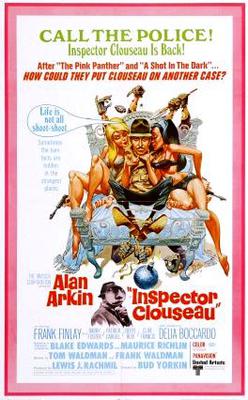
Inspector Clouseau is a 1968 British comedy film, and the third installment in The Pink Panther film series. It was directed by Bud Yorkin, written by brothers Frank Waldman and Tom Waldman and stars Alan Arkin as the title character. It was filmed by Mirisch Films at the MGM-British Studios, Borehamwood and in Europe.

Namak Halaal is a 1982 Indian Bollywood-language masala film, directed by Prakash Mehra and written by Kader Khan. The film stars Shashi Kapoor, Amitabh Bachchan, Smita Patil, Parveen Babi and Waheeda Rehman.
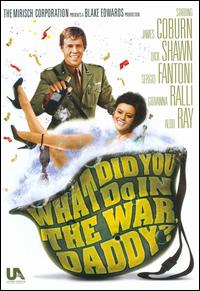
What Did You Do in the War, Daddy? is a 1966 comedy DeLuxe Color film written by William Peter Blatty and directed by Blake Edwards for the Mirisch Company in Panavision. It stars James Coburn and Dick Shawn.
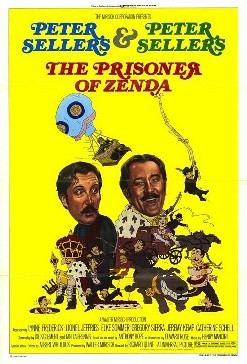
The Prisoner of Zenda is a 1979 American comedy film directed by Richard Quine that stars Peter Sellers, Lynne Frederick, Lionel Jeffries, Elke Sommer, Gregory Sierra, Jeremy Kemp, and Catherine Schell. It is adapted from the 1894 adventure novel by Anthony Hope. The novel tells the story of a man who has to impersonate a king, whom he closely resembles, when the king is abducted by enemies on the eve of his coronation.
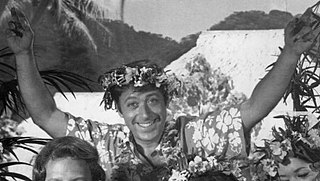
Stephen Robert Franken was an American actor who worked in film and television for over fifty years.
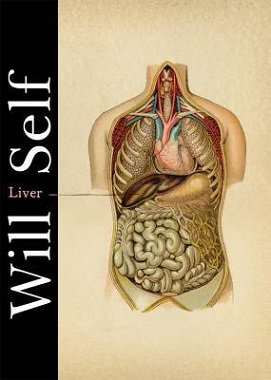
Liver: A Fictional Organ with a Surface Anatomy of Four Lobes is the seventh collection of short stories by Will Self. The stories in the collection are all connected to the liver and was described by the author as "...a collection of two novellas and two longer short stories, all on a liverish theme. Each story features different people suffering from different forms of liver damage." Time Out was one of the first publications to review it and said...
"This inspired collection of four stories uses the liver as framework and controlling metaphor – there’s a tale for each lobe – but is less interested in the organ as a metabolic regulator than in what happens when it’s damaged beyond repair. At this point, Self’s gift for (ahem) bilious satire kicks in, its target largely the ‘slapstick of addiction’ – for which the reformed junky has witheringly little time...Self has all the fun you’d expect with this, and the result is satire so vicious it makes Charlie Brooker look restrained."
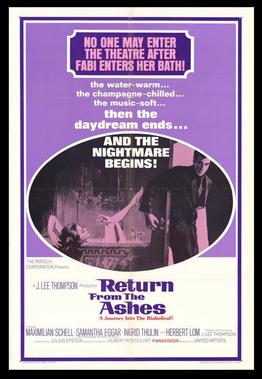
Return from the Ashes is a 1965 British thriller film directed by J. Lee Thompson and starring Ingrid Thulin, Maximilian Schell, Samantha Eggar and Herbert Lom. It is based on a novel by French crime writer Hubert Monteilhet, adapted for film by prolific screenwriter Julius J. Epstein. The novel would also serve as the source material for the 2014 German film Phoenix, directed by Christian Petzold, though the latter film makes multiple changes to the book's elements and concerns itself solely with the plot to reclaim an inheritance.

James Edward McKinley was an American character actor. He frequently played authority figures, including lawmen or medical personnel.

McHale's Navy is a 1964 American technicolor comedy film based on the 1962–1966 black and white television sitcom McHale's Navy starring Ernest Borgnine, Tim Conway and Joe Flynn, which had in turn originated with a one-hour anthology drama starring Borgnine entitled Seven Against the Sea. The film version was directed by series producer Edward Montagne and its supporting cast includes Carl Ballantine, Gavin MacLeod, Jean Willes, Claudine Longet, and George Kennedy. The film was followed by a sequel entitled McHale's Navy Joins the Air Force which did not feature Borgnine or Carl Ballantine. A remake entitled McHale's Navy, was released in 1997 and features an appearance by Ernest Borgnine playing a 75-year old McHale. The filming location for New Caledonia is the same as the one used in the series. For more information on the main characters see the TV series McHale's Navy. The movie was released on DVD for Region 1 on January 31, 2011.
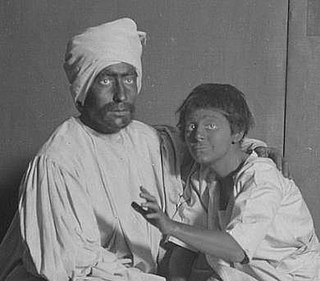
Brownface is a social phenomenon in which a white or light-skinned person attempts to portray themselves as a "brown" person of color, but less overtly and with a lighter complexion than traditional blackface. This may include mimicry of North African, West Asian, South Asian, Southeast Asian, Melanesian, Micronesian, Polynesian, Hispanic/Latino, Native American or other Indigenous groups, including olive-skinned Caucasians such as Southern Italians, Sicilians, Greeks, Arabs, Persians and/or ethnic identity by using makeup, hair-dye, and/or by wearing traditional ethnic clothing. It is typically defined as a racist phenomenon, similar to blackface.



















